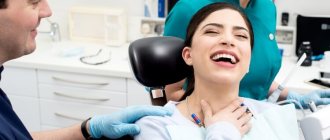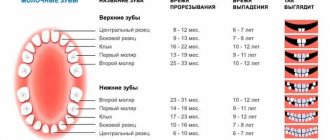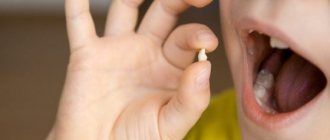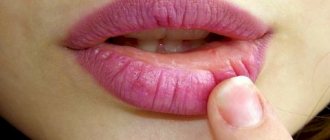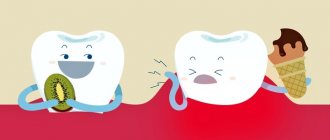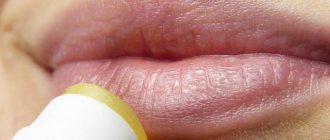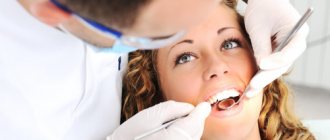Our pets worry and take care of us, feel our illnesses, depression, and depression. Cats unerringly find a sore spot and settle down on it, warming them with their warmth.
Dogs lick their owner's wounds, as their saliva promotes regeneration. And who will take care of them when they find themselves in an unfamiliar situation or fall ill with an unknown illness?
To understand how much they need your help, imagine: you are sick, the Internet, doctors, reference books do not diagnose your illness, and you are in a panic looking for similar diseases and treatments. The same thing happens with a pet, he worries no less than you, and well-being and calmness depend only on the actions of the owner.
Reaction of a male dog to a female dog in heat
Teeth grinding is not always a pathological sign. Male dogs often show sexual arousal. This is especially noticeable if there is a female dog in heat nearby.
Signs of excitement in a male dog:
- small frequent movements of the lower jaw;
- incomplete erection – the penis partially emerges from the prepuce;
- attempts to make cages.
Normally, male dogs begin to experience sexual arousal at 6-8 months. Up to 1-1.5 years, testosterone levels continue to increase, so young males are more active in finding a partner. But constant sexual behavior is formed only by 3-4 years.
Without cages, male dogs may develop atypical behavior - a reaction to other males, people and inanimate objects.
If a male dog reacts by chattering his teeth at a female during a walk, then this is a normal reaction and no action needs to be taken about this (only if you find a partner for mating). But if a male develops a sexual attraction to other males, the owner (other people), or he tries to mount toys and interior items, then it is necessary to work with him:
- at the moment of boarding, remove him and limit him with the commands “Stop”, “Lie down”;
- hide or throw away objects on which the dog is mounting;
- increase the load, add training;
- The radical method is castration.
Although removing the testes is a radical remedy, it does not always help. A number of males retain sexual behavior despite the fact that hormone production has ceased. In this case, it is necessary to continue educational work with the animal - after castration, the dogs become more obedient. It is important not to encourage the male to mount people and other inappropriate objects. Approval will cause a pathological reflex, which will be difficult to remove in the future.
When a dog's trembling is not dangerous
Fortunately for every owner, tremors in dogs also occur for completely harmless reasons: It happens that a dog’s paws, and sometimes his whole body, tremble in the cold.
The animal curls its tail, cowers, and breathes intermittently. Moreover, a pet can tremble not only on a chilly street, but also at home, for example, after bathing, if the room is cool;
Males almost always tremble when they see a female in heat.
At the same time, they can behave extremely restlessly (attempting to break off the leash, run away, etc.), bark and whine, breathe loudly;
Many dogs tremble from an excess of feelings
, for example, seeing the owner returning home after a long absence. This behavior is most often found in small pocket dogs (like the Toy Terrier), as well as large dogs with docked tails. By the way, older dogs often have jaw trembling during emotional experiences;
Sometimes the dog trembles and breathes rapidly, feeling afraid
(for example, when he hears the sounds of ambulance sirens or fireworks);
- There is no need to be afraid if the animal trembles in its sleep
(but when it wakes up, the tremor goes away during wakefulness). Most likely, he is dreaming about something exciting.
Presence of intestinal parasites
Teeth grinding often occurs in dogs with severe intestinal infestation. The pathological effect exerted by worms on the animal’s body causes discomfort and pain, which causes tooth decay. Helminth infections in dogs are accompanied by other clinical signs:
- diarrhea, constipation and other digestive disorders;
- the appearance of blood and mucus in the stool;
- exhaustion, dehydration;
- weakness, depression;
- the appearance of itching in the anal area with a number of invasions.
The diagnosis is established by laboratory tests. Eggs, larvae or adults of parasites are found in stool samples. For this purpose, sedimentation and flotation methods are used. In the first case, a sample of feces is crushed (ground in a mortar with a small amount of water), then the sample is washed into a laboratory beaker with 50-100 ml of water. The preparation is allowed to stand for 30 minutes, after which the supernatant liquid is drained and water is added to the residue. The solution is again left to precipitate and the procedure is repeated until the water above the sediment becomes clear. Now you should place the remaining stool sample on a glass slide and examine it under a microscope. In this way, imaginal and larval forms, as well as large eggs, can be detected.
In most cases, the flotation method is used, since it allows the detection of even small eggs, which are found in many species. To do this, a fecal sample is diluted in a hypertonic solution (saline, glycerin and water, zinc sulfate) and left for 10-30 minutes. After that, a metal loop is used to grab a drop from the surface and transfer it to a glass slide. The study is carried out under a microscope.
Methods of allergy testing and detection of antibodies in blood serum are also used. For treatment, anthelmintic drugs are used, which are prescribed after the detection of parasites and their identification. Complex therapy is also carried out - elimination of secondary pathologies and negative symptoms.
Why do old animals click?
Over the course of its life, the dog receives dental injuries (cracks, chips), wears off tooth enamel, and damages gums. All these factors, combined with poor nutrition, can lead to caries and similar diseases . Caries itself irritates the dental nerve, causing contractions, and the body also tries to get rid of the diseased, infected tooth using this method.
If your dog's teeth are loose or his breath smells bad, he clearly has an oral disease. They can be caused by infections, lifestyle choices, or trauma (such as hot food or bone breaking the gum)
REFERENCE! Knocking can also be a consequence of injury. When enduring severe pain, a person clenches his fists, clenches his teeth, or performs similar actions. To distract himself, the pet has no choice but to chatter his teeth.
Damage to the neuromuscular system
The dog grinds its teeth due to pathology of the masticatory muscles and pharyngeal muscles caused by the rabies virus. Rabies is a dangerous disease of animals, the causative agent of which affects the nervous system and salivary glands. Infection occurs when a sick animal bites a healthy one. All warm-blooded animals are susceptible to the virus.
Clinical picture:
- appears no earlier than 10-12 days from the moment of the bite;
- From the moment the first symptoms appear until death, up to 3 weeks pass;
- at the initial stage there is lethargy and depression;
- itching appears as the virus penetrates;
- aggressiveness, agitation;
- gnashing of teeth, slack jaw;
- excessive salivation;
- pupils dilated;
- eyes are inactive;
- difficulty swallowing, hydrophobia.
The pathology ends with inflammation of the brain, muscle paralysis and death. The diagnosis is confirmed by biological tests and laboratory tests. Until the results are negative, the dog is isolated and no contact is allowed.
Treatment of dogs for rabies has not been developed, there are no effective methods and means, therefore, if the test is positive, the animal is killed. The development of the disease can be prevented - annual vaccination avoids the development of the virus in the body. You should also avoid contact of your pet with wild and stray animals.
Similar clinical signs can be observed in other dangerous infectious diseases. So, with carnivore distemper, the dog grinds its teeth, and increased salivation is observed in some cases. But in this case, in the acute form, dogs will have serous-purulent conjunctivitis, nasal discharge, and cough. Differential diagnosis and laboratory tests will help identify the cause of the pathological condition.
Tags
about dogs wash the dog feed the dog why the dog knocks Dogs lick The dog was given the dog stood out If the dog consumed. The dog is trying to chatter teeth. Teeth are cutting teeth are chattering. Teeth are cutting new teeth then the teeth are found. If teeth are chattering new teeth. old teeth. an infected tooth like this. the dog is chattering teeth.
headarticlesshareyourviolinwhatcommentagepublishedsitepainnoscript
Sign of severe pain
Teeth grinding is a common sign of severe pain response. The reasons for pain can be very diverse. In some cases, they are associated with the oral apparatus or organs of the head, but most often these are any systemic changes.
In order to carry out proper treatment, the cause of the pain must be accurately determined. To do this, pay attention to the accompanying symptoms:
- bitches often grind their teeth with endometritis, pyometra. In this case, there will be a discharge of pus or other exudate from the genital organs, and the volume of the abdomen may increase. When the ovaries are involved in the pathological process, bilateral baldness on the sides is detected;
- peritonitis is accompanied by severe pain in the abdominal wall. The abdomen is enlarged in size. The dog has an increased pulse and breathing, severe depression, the temperature is increased to 41 degrees;
- Otitis is manifested by tilting the head towards the affected ear; at the beginning of the disease, the dog will shake its head. Pus may be discharged from the ear. Palpation reveals severe pain, swelling, and increased local temperature.
Identification of the cause is possible only after a complete clinical examination of the animal. The dog's temperature, frequency and pattern of breathing and heart contractions are measured. Changes in behavior, eating, bowel movements and urination are noted. Examine the condition of the outer coverings and lymph nodes.
If necessary, blood is taken for clinical and biochemical analysis. Conduct physiological tests and instrumental studies. A comprehensive examination allows a comprehensive assessment of the animal’s health status.
The choice of treatment should be confirmed only after diagnosis. At first, you can only stop the pathological symptoms, but you should understand that this can blur the clinical picture. Treating teeth chattering in dogs can only be done by eliminating normal behavior.
Causes
This can include many things, from reflexes and injuries to diseases and rare genetic gifts.
The most common reasons include:
Reaction to stimuli
For food or smell
In the mid-19th century, a Russian scientist, Ivan Petrovich Pavlov, conducted experiments studying reflexes and muscle memory. The experiment is called “Pavlov’s Dog”. The gist was this:
- The dog was served food according to the regimen;
- Immediately before food was served, a light bulb was lit, which was in the field of view of the experimental subject;
- After some time, the food supply was stopped and the light came on.
So no need to worry, perhaps the chattering of teeth is a normal preparation for eating , so to speak, “warming up the engine.” This pathogen is natural, which means that no intervention is required.
For medicines
If your dog has taken pills that taste bitter, it is possible that he is making such movements in an attempt to get rid of the unpleasant taste in his mouth . Another case is when the pills affect the functioning of the parasympathetic nervous system, sending false signals to the muscles and receptors. Consult your veterinarian regarding the compatibility of the drug with your pet’s body.
Allergy
Some pathogens bind to histamine receptors in the mouth, causing involuntary muscle contractions, itching, and burning . In such cases, you can take a small dose of Suprastin or a similar hypoallergenic drug.
Parasites
Some microorganisms, as well as types of mites that live under the skin, can be located in the oral cavity, causing discomfort . The dog tries to scratch the itchy place, but it doesn’t work and it makes a knock.
In this case, pay attention to whether the dog is itching, fidgeting on the floor, etc., since in the presence of parasites this is exactly the reaction that appears. Here you need to consult a doctor who, based on an analysis of a skin biopsy, will prescribe a remedy against pests.
Emotional excitement
The situation is typical - the dog is happy to see you, wags its tail, whines and chatters its teeth, showing with all its appearance how bored it is. The same thing happens in the process of flirting with a female or during sexual heat.
Sometimes knocking in dogs is observed during aggression, anger, resentment, or a tense state; it all depends on temperament and character. No measures need to be taken , but if the knocking interferes with sleep, you can give the dog a sedative.
Damage to the central nervous system or brain
The brain regulates all processes in the body, sending signals to the nervous system, which distributes them to the right areas of the body. In many diseases, there is a disruption in the functioning of the system . This is mainly apathy and sedative behavior, but hyperactivity is also possible.
Genetics
All creatures have innate habits : some have ears that move, some blink out of sync, and some chatter their teeth. We are all unique and have our own quirks.
Teeth cutting
A common problem is from discomfort when cutting new teeth . If there is no object at hand that can be chewed, then the teeth find themselves such a distraction. Find or buy a silent rubber toy or bones in a variety of flavors at a pet store to help provide relief for your pet.
Poisoning
Your dog may have heartburn, indigestion, or vomiting, the symptom of which is pounding. It is necessary to pay attention to the dog’s behavior , measure its temperature, and check whether its nose is wet.
Help: if there is a suspicion of intoxication, you need to rinse the stomach with plenty of water or a solution of soda and salt in a 1:1 ratio.
Food stuck
If there were bones or large elements in the dish, most likely one of them got into the area between the cheek and the outermost tooth, getting stuck there. The dog cannot help itself with its hands, so it tries to free itself from the foreign object with such movements. Inspect the oral cavity for food debris and help the dog get rid of them.
Convulsions
In diseases accompanied by loss of fluid or increased temperature, convulsions occur throughout the body, including in the area of the musculoskeletal system .
A warm water compress or a heating pad, which should be pressed against the withers, will help here; there the brain passes into the spinal cord, and it is in that place that false signals and malfunctions are often concentrated. A heating pad will help relax the nerve endings, and thereby eliminate the knocking.
Innate gift
The most rare and unusual case. Have you ever heard that dogs can read and do mental math? So, there are dogs endowed with a musical gift - the ability to feel rhythm and reproduce it , tapping not only with their teeth, but also with other parts of the body.

